January 2024
A look back: 90 years of Singapore
As we celebrate nearly a century of flights to the Garden City, our Far East fan and AV buff walks us through the history of the route
“There is no such luxury in the air as is provided by the British air service, with its roomy comfort in airliners and with its unequalled name for personal service.” While this is a statement we’d be proud to stand by today, the above sound bite is, in fact, from an Imperial Airways (forebearer of British Airways) campaign, advertising its new route to the Far East in the 1930s.
Ninety years ago, on 9 December 1933, Imperial Airways launched the new service to Singapore. The promise of “unequalled personal service” was no doubt welcome news to passengers preparing to board Imperial’s flying boat, a journey that would take them ten days with no fewer than 21 stops along the way. The flight would cross Europe, North Africa, the Middle East, India and into Southeast Asia before sweeping across the warm waters and into the Royal Air Force station at Seletar, in Singapore’s northeast.
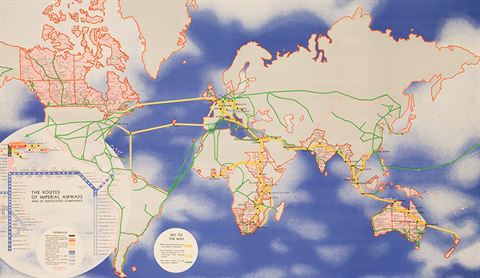
Stops included: Paris, Brindisi, Athens, Alexandria, Gaza, Baghdad, Basra, Kuwait Bahrain, Sharjah, Gwadar, Karachi, Jodhpur, Delhi, Cawnpore, Allahabad, Calcutta, Akyab, Rangoon Bangkok, Alor Setar, Penang and Singapore
But why flying boats?
In the early days of aviation, most runways were grass, and fairly bumpy at that. Flying boats were a solution to this challenge as they could be moored alongside oceans liners from Southampton to New York. This new class of aircraft was a great leap forward in aviation technology – the planes were both bigger and had a longer range than previous models, with the flexibility of being able to land on open water anywhere in the world.
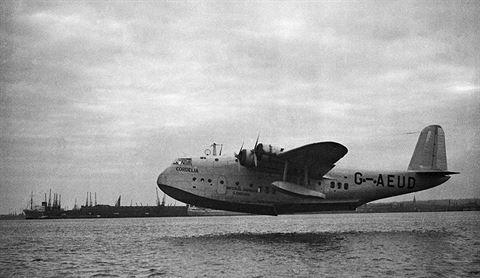
Imperial Airways Shorts C Class Empire flying boat G-AEUD Cordelia lifts off the water on its first stage of its flight. It operated the Southampton to Singapore sector of the Southampton to Brisbane service (Alamy)
Flying to Singapore
The first flights to Singapore used a mixture of aircraft, but it was the British-built Short Empire that dominated the route in the interwar period. Despite its great size for the day, it only carried a maximum 17 passengers with five crew.
Once all four propeller engines had spooled up and been set to full throttle, the plane took almost a mile to take off before reaching a cruising speed of 165mph, with a range of 760 miles. Today, a Boeing 777-300ER flying on the same route has a cruising speed of 574mph and a range of 8,430 miles. But still, at the time of the inaugural flight, the Wright Flyer – the world’s first heavier-than-air powered aircraft – was only 30 years old, and that flight lasted 12 seconds, travelling 36.5 metres.
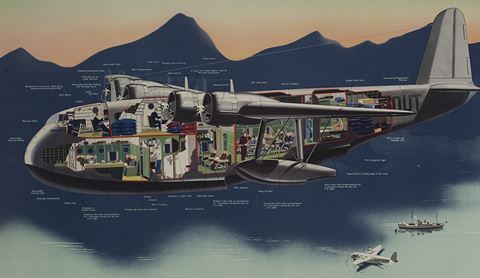
Cutaway illustration of Empire flying boat (Getty)
Life on board
Last year, we doubled the number of hours of entertainment on board our long-haul flights but, back in the 1930s, the main distractions came in the form of books, newspapers and the contents of a martini glass.
Fledgling services to France, Italy and other nearby countries had offered something closer to a picnic when it came to an in-flight meal, but the arrival of the Empire flying boats brought with it a full-service menu, served from a fully stocked galley. Fresh food – placed in sealed vacuum tubes for heating or chilling on board – was loaded at each of the 21 stops en route.
An excerpt from The Imperial Airways Gazette, dated September 1937, gives us a sneak peek of what you might have expected on your branded fine china and crystal glassware….
Sample dinner menu from The Imperial Airways Gazette, September 1937
Pâté de fois gras or grapefruit
Roast chicken, ox tongue, York ham
Russian salad
Peaches Melba, golden figs
Cheese – Cheshire, Camembert
Toast Imperial, assorted biscuits, coffee
Wine pairings provided
These flying boats cruised about 23,000ft lower than today’s aircraft and so flights could be on the bumpy side. To combat this, Imperial Airways also stocked the creature comforts of the day, including Horlicks, Bovril, OXO and smelling salts, alongside cigarettes of Turkish, Virginian or Egyptian origin.
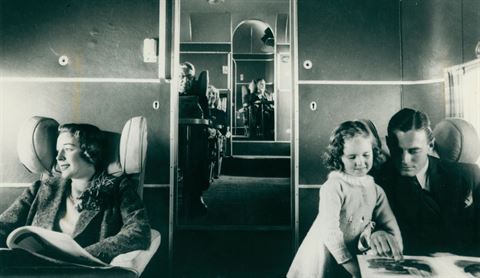
Life on a board a Qantas Empire flying boat (Qantas)
Stop and start
Having ploughed through various delights on the menu, taken a stroll along the promenade deck (a large cabin with porthole windows) and played a few hands of cards in the smoking room, passengers found it was usually time to descend again.
Many of the 21 stops on the way to Singapore, at continental Asia’s southernmost tip, were just for refuelling, and only took a few hours at a time. Others stops were overnight, featuring grand hotels in far-flung locations that were included in the price of the ticket.
As with the ocean liners that aircraft would ultimately replace, these flights were a vital communication link and carried letters and parcels across the globe at speeds never seen before. Each letter was marked with an E or W, depending on the direction of travel.
Despite the many legs involved, the first flight to Singapore cut journey times on rival P&O ships by 19 days.
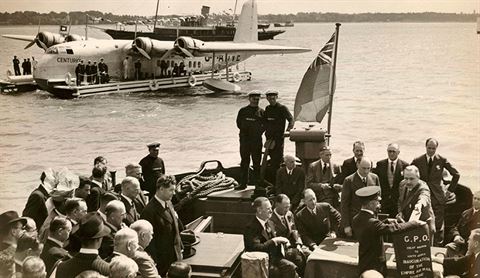
Loading the first Empire Air Mail (Great Britain to South Africa) to be transported by Imperial Airways S23 C-Class flying boat, G-ADVE, Centurion, Southampton, 29 June 1937 (Alamy)
Next stop, Singapore
The last stop before arriving in Singapore was at the western Malaysian island of Penang, where the plane was refuelled around midnight before taking to the skies for a final time at 3am for the 324-mile leg into Singapore.
Ground personnel in Singapore would take to the water to light the landing lamps and be on standby to ferry weary passengers from the plane on to the jetty before they were driven for a much-needed breakfast at the legendary Raffles Hotel.
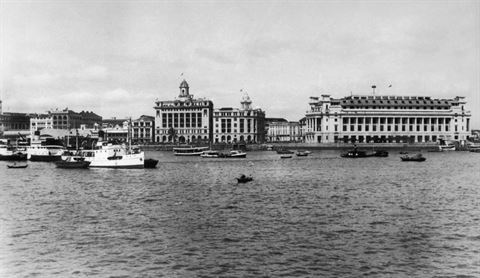
Mouth of the Singapore River in the Downtown Core of Singapore, 20 February 1941. The Fullerton Building (later the Fullerton Hotel), then Singapore's General Post Office, is on the right (Getty Images)
The route today
Ninety years on and lavish breakfasts are still being served at Raffles, except we now whisk you there in 13 hours, non-stop, twice a day. In March of this year, a contemporary gentle giant makes its own return with the reintroduction of the Airbus A380 superjumbo on the route. This, the world’s largest passenger jet, offers more space, more seats and a considerably more comfortable experience on board.
And the bustling city state of Singapore remains as popular today as it was in the 1930s: a confluence of culture, commerce and cuisine. Back then, the Great New World amusement park may have been the place to go for an evening of entertainment but, today, the shophouses of Ann Siang Hill teem with life in the evenings as patrons sink cocktails at The Junior Pocket Bar. In Serangoon, steamy street food exchanges hands at the aptly named Chomp Chomp Hawker Centre.
Finally, in a nod to the communications that flourished between London and Singapore as a result of advent of aviation, there’s no better place to call home for your stay than The Fullerton Hotel. The wide, colonnaded building straddling the city’s iconic bay and Singapore River was once the general post office and the ultimate terminus of the cargo from that first flight, some 90 years ago.
More from previous issues
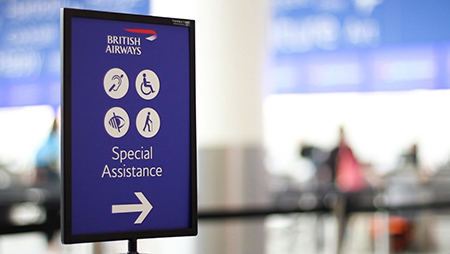
How to be a better traveller in 2024
Five travellers with five unique viewpoints make their case for how life (and holidays) can be made easier during the year ahead

Can you guess the airport code?
Now you’re clued up on the stories behind some of our more curious airport codes, it’s time to take our code-breaking quiz
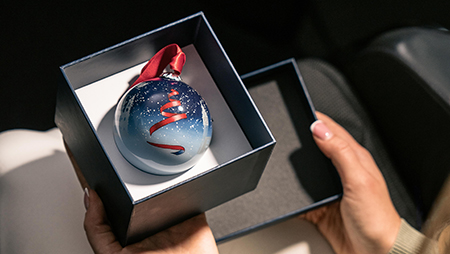
What’s going on in our lounges this Christmas
There’s magic in the lounges this month as Christmas joy comes to town. Here, we spoil a few of the surprises in store
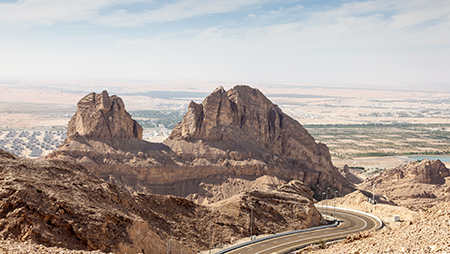
Where to go in 2024: five new hotels worth driving for
Wondering where Avis car hire can take you next year? Wonder no more, as we map out five scene-stealing hotels at the end of the drive
